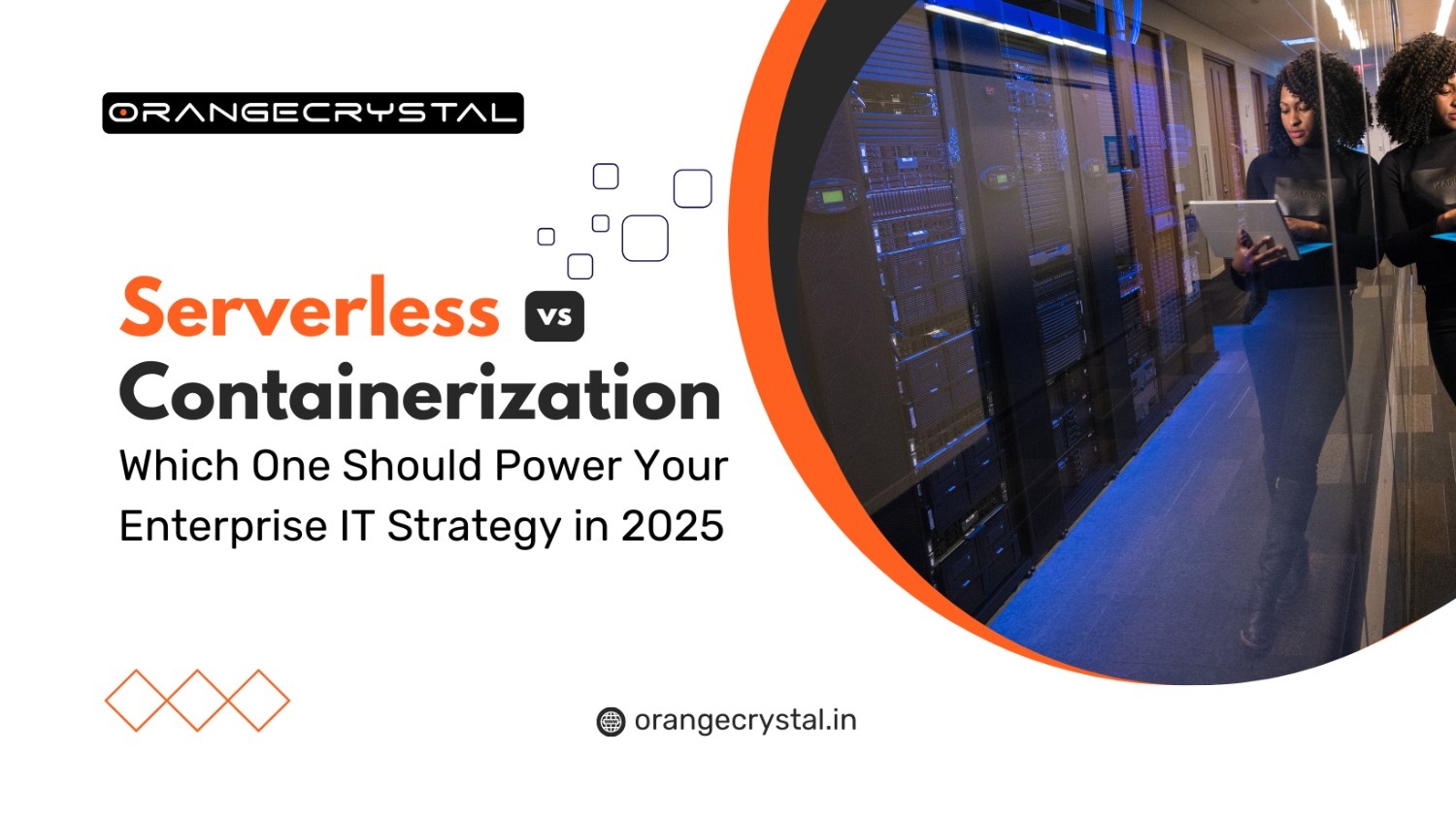Serverless vs Containerization: Pros & Cons for Enterprise IT Strategy
As enterprise technology leaders seek agility, scalability, and cost-efficiency, two modern application deployment paradigms frequently enter the strategic conversation: serverless computing and containerization.
While both technologies abstract infrastructure to some extent, they serve different operational and architectural needs. Understanding their respective strengths, limitations, and business implications is crucial for informed decision-making—especially for roles deeply involved in IT operations, vendor strategy, and customer experience.
This blog unpacks the pros and cons of serverless and containerization, helping operations leaders align technology decisions with business goals such as faster time to market, operational efficiency, and superior digital experiences.
Understanding the Concepts
What is Serverless Computing?
Serverless is a cloud-native execution model where the cloud provider dynamically manages the allocation and provisioning of servers. Applications are broken into functions—small, stateless pieces of code that are invoked in response to events.
Services like AWS Lambda, Azure Functions, and Google Cloud Functions are the key players in this model.
In serverless, your development teams focus on writing business logic, while infrastructure management, scaling, and availability are abstracted away.
What is Containerization?
Containers encapsulate an application and all its dependencies into a lightweight, portable unit that can run consistently across environments. Unlike traditional virtual machines, containers share the host OS kernel, making them more efficient.
Docker is the dominant container engine, and Kubernetes has become the de facto orchestrator for managing containerized workloads at scale.
Containers give you fine-grained control over infrastructure, while still improving deployment consistency and operational efficiency.
The Business Case for Serverless
Pros
1. Operational Efficiency
- Serverless removes the need for provisioning, patching, and scaling infrastructure.
- Ideal for teams with limited DevOps resources or those seeking to eliminate infrastructure overhead.
2. Elastic Scalability
- Functions scale up and down automatically and instantly based on demand, making them ideal for variable workloads.
3. Pay-per-Use Cost Model
- You are billed only when functions are executed, reducing costs for sporadic or bursty workloads.
4. Accelerated Time to Market
- Developers can deploy new features faster without worrying about underlying infrastructure, reducing time-to-value.
5. Built-in High Availability
- Serverless functions run in highly available environments by default, which supports business continuity without extra engineering effort.
Cons
1. Cold Start Latency
- Infrequently used functions may experience a delay during the first invocation, which can impact latency-sensitive applications.
2. Vendor Lock-In
- Serverless services are tightly coupled to specific cloud providers, making migration and interoperability challenging.
3. Limited Control
- Fine-grained tuning of runtime environments and infrastructure is restricted, which may conflict with compliance or security requirements.
4. State Management Challenges
- Serverless functions are inherently stateless, requiring additional architecture for workflows that depend on persistence.
The Business Case for Containerization
Pros
1. Portability and Flexibility
- Containers can run consistently across on-prem, public cloud, hybrid, and edge environments, which is invaluable for multi-cloud strategies or vendor neutrality.
2. Greater Control
- Full control over the application stack and infrastructure, enabling compliance with security, governance, and observability requirements.
3. Scalable Microservices Architecture
- Perfect for breaking down monoliths into modular, independently deployable microservices, improving agility and fault tolerance.
4. Mature Ecosystem
- The Kubernetes ecosystem offers enterprise-grade orchestration, service discovery, auto-scaling, and observability frameworks.
5. Persistent Workloads
- Suitable for applications requiring long-running processes or stateful services, like databases or customer engagement platforms.
Cons
1. Infrastructure Overhead
- Requires setup, maintenance, and skilled DevOps teams to manage orchestration, logging, and scaling strategies.
2. Complexity
- Orchestrated container environments can be complex to configure and maintain, especially at scale.
3. Slower Time to Market
- Compared to serverless, containers typically require more extensive setup and configuration, potentially slowing down rapid prototyping.
4. Resource Consumption
- Containers, though lightweight, still consume more baseline compute and memory resources than serverless functions during idle periods.
Strategic Considerations for Business Leaders
When evaluating serverless vs containerization, the right choice often depends on:
Workload Profile
- Use serverless for event-driven, stateless workloads like background jobs, API backends, or automation scripts.
- Choose containers for complex, stateful, or long-running services like customer-facing applications, data processing pipelines, or CRM integrations.
Integration & Legacy Systems
- Serverless can introduce integration friction when interfacing with legacy systems.
- Containers offer greater compatibility with existing applications that require specific OS-level configurations or dependencies.
Security and Compliance
- Industries with strict regulatory mandates may prefer containerization for its granular access control and audit capabilities.
- Serverless can still be secure, but the shared responsibility model limits control over some security layers.
Cost Optimization
- Serverless is cost-effective for sporadic, variable, or seasonal usage.
- Containers are more cost-efficient for high-throughput, always-on services when optimized at scale.
Final Verdict: It’s Not Either-Or
For enterprise IT, serverless and containerization are not mutually exclusive. Many leading organizations are adopting a hybrid strategy:
- Use serverless to streamline event-driven workloads and reduce DevOps overhead.
- Use containers for core business systems that demand control, compliance, and high availability.
Key Takeaway for Operational Leaders
As a operational leader, your decisions around IT architecture must balance agility with control, cost with performance, and innovation with risk.
Serverless offers maximum agility and reduced operational friction, ideal for short-cycle innovation and event-driven automation. Containerization provides enterprise-grade control, resilience, and extensibility, supporting long-term scalability and platform modernization.
Understanding these paradigms empowers you to work more effectively with your CIO and DevOps teams to design scalable, cost-effective, and resilient digital platforms—ultimately delivering better experiences for both your internal teams and external customers.
Unsure which deployment model fits your enterprise roadmap?
Our cloud and DevOps experts at OrangeCrystal can guide you through a tailored assessment to future-proof your architecture. Connect with us today.



Leave a Reply